Boston Red Sox farm system is in big trouble

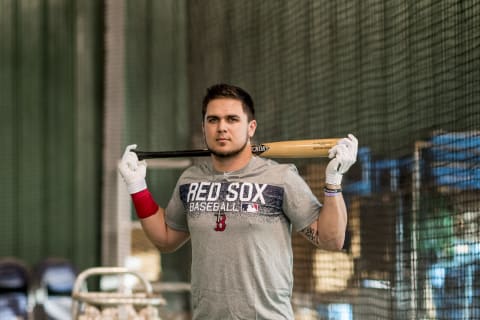
Michael Chavis has been suspended, and Jay Groome is out for the year with Tommy John surgery. It can’t get much worse for an already thin farm system, right? Well, about that…
Over the winter, fellow Call To The Pen writer Benjamin Chase put together his top 10 list for the Boston Red Sox. A quarter of the way through the season felt like a good time to take stock of what those ten prospects have accomplished.
Imagine my surprise when I realized that every single one of them has taken a step back. In some cases, a significant step back.
There was a reason for hope that the Red Sox would go from one of the worst systems in the game to something middle of the pack. That improvement hinged on the bright spots from 2017 continuing to shine — not to mention some growth from some new additions to the organization.
Names like Michael Chavis, Mike Shawaryn, Roniel Raudes and Brayan Mata took impressive steps forward in 2017. They were expected to continue moving in the right direction.
New additions like Tanner Houck, Alex Scherff, and Cole Brannen could have started rocketing through the system with strong starts. None have done so.
The real purpose of a farm system.
A farm system exists for mostly two reasons. To produce cost-controlled young talent for the major league roster. And to develop chips to be used in trading for needs for the major league roster. Having a top-ranked farm is wonderful, but at the end of the day, there is no trophy for best minor league system.
The goal is to win games at the primary league level. Promotions and trades are the two main ways a farm system can contribute to that goal.
When a system that started out thin in the first place scuffles so comprehensively, it can actually have an immediate impact on the major league team’s ability to win now. Such is the case with the Boston Red Sox.
Under General Manager Dave Dombrowski, they have leveraged a great farm system to maximize a competitive window over a three-year span stretching from 2017-2019. Part of that plan was to continue using prospects to plug holes in-season. At the moment, the ability to do so has been significantly compromised by the performances of the top 10. How bad has it been? Well…
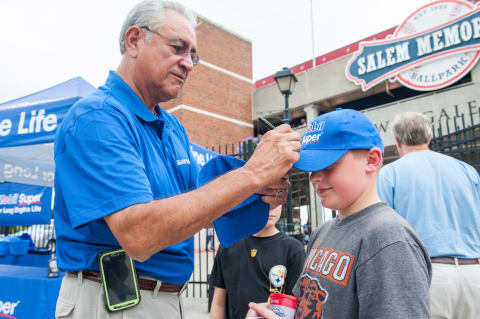
Red Sox prospect #10: Bryan Mata – RHP
The 2017 season put Bryan Mata on the map. At the start of that year, he was a promising young pitcher who had yet to succeed above rookie level. Over 17 starts at class-A Greenville, however, he managed a 3.74 ERA with a 22.7% strikeout rate and an 8% walk rate. His 3.39 FIP and 3.58 xFIP suggest that his ERA was a good measure of his talent. A significantly higher or lower figure in either might suggest a measure of luck or defense impacting the results beyond what he can control.
Having that success last season led to a promotion to high-A Salem where he has not fared so well. After six starts he sits at a decent looking 3.92 ERA. But his FIP is 6.34, and his xFIP is 6.14. The strikeout rate has dropped to 15.6%, and his walk rate is a terrifying 20.8%.
He has also seen a massive increase in ground balls going from 52.3% to 70.9%. Given his drop in BABIP to .273, he’s likely giving up very hard contact on the ground. He’s also seen his HR/FB rate climb nearly six percent to 11.1% on the season.
In short, he’s getting rocked. There is time for him to turn it around, but as we approach the middle months, the clock is ticking on prospects establishing a value for potential trades. Mata was likely one of the more tradable assets Dombrowski had at his disposal coming into the season. If he’s going to regain that value, he needs to figure it out immediately.
Red Sox prospect #9: Roniel Raudes – RHP
Roniel Raudes made a name for himself in 2016 when he finished the season with a 3.65 ERA. That included a 22.2% strikeout rate and a fantastic 4.9% walk rate. He stumbled in 2017 dropping his ERA to 4.50 with a 4.62 FIP and a 4.29 xFIP. There was a slight dip in strikeout rate to 18.5%, but it was his walk rate which most concerning.
It climbed all the way up to 8.6%. But he was making a significant jump from class-A Greenville to high-A Salem. It was thought that if he repeated the level, he would look much better the second time around.
After eight starts he has been unable to improve upon his 2017 stats. Aside from ERA, which looks okay at 3.83, everything else has remained uninspiring. Like the previous entry on the list, his FIP and xFIP are significantly higher than his ERA. Though not quite as bad Mata’s, the 4.24 FIP isn’t much of an improvement over the previous year. And the 5.00 xFIP suggests that ERA is going to regress a bit.
The xFIP is driven by his unsustainable 2.3% HR/FB rate. This season has also seen his strikeout rate drop further to 15.2% and his walk rate increase another 1.5% to 10.1. There isn’t anything here to be excited about. Given the distance between Raudes today and the season that put him on the map, maybe there never really was.
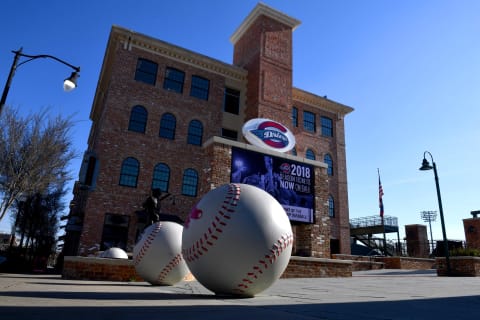
Red Sox prospect #8: Alex Scherff – RHP
Alex Scherff was an early round talent who fell to the Red Sox in the 5th. He was paid a significantly over-slot bonus of $700k. At the time of his drafting, he was reportedly throwing 93-95 MPH and could touch 98 with his fastball. He also had a four-pitch mix including a curveball, a changeup, and a slider. With a potentially plus fastball and three other pitches to work with, his ceiling seemed quite high.
Since signing with the Red Sox last July, Scherff has not used his slider, and his fastball velocity has been significantly lower than advertised. He works 90-92 and tops out at 93. The curve and changeup have been very inconsistent. Soxprospects.com describes his delivery:
“Starts on the first base side and uses a medium leg kick. Has a slight trunk twist in his delivery before he comes forward. Delivery is very stiff and arm heavy. Very strong, live arm, which he uses to make up for not effectively incorporating his lower half into his delivery. Struggles to find a consistent arm slot and release point at times. Will come more over the top at times when throwing his breaking ball.”
At best he has a long way to go before he is anyone worth getting excited about.
Red Sox prospect #7: Cole Brannen – OF
When his name was called in the second round of the draft last summer, Cole Bannen inspired memories of Jacoby Ellsbury. None of his tools were quite as impressive, but with a 65-grade speed tool (some scouts said 70), the center fielder looked like a lite-version of the former Red Sox prospect and outfielder-turned-Yankees-bench-ornament.
Brannen sported the ability to get on base, steal bases and strong defense in center before the draft. In brief stints across the Gulf Coast League and the NYPL, he showed exactly what he was drafted for. This left Red Sox fans hopeful. The start of his 2018 season has erased those gains.
Cole Brannen currently has a triple slash line of .157/.246/.205. That’s a 35 wRC+ in class-A Greenville. He’s still stealing bases well, nabbing nine already, but aside from that, he provides no offensive value.
While he’s still very young and has plenty of time to turn it around, he also has a long way to go before he’s even Ellsbury-lite. With no power to speak of (he has yet to homer as a pro), his chances of ever reaching the majors are dependent entirely on projection.
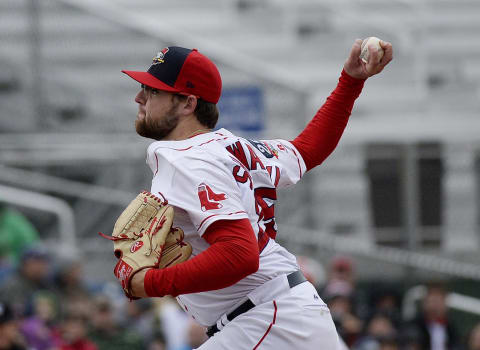
Red Sox prospect #6: C.J. Chatham – SS
The Red Sox drafted C.J. Chatham in the 2nd round of the 2016 draft. At 6’4, 185 pounds, he was reminiscent of the late 80’s and early 90’s shortstops like Alex Rodriguez or Cal Ripken Jr. No one was equating his talent to all-time greats, of course. But thoughts of a strong defensive shortstop and developing power certainly weren’t out of line.
After a promising short-season debut, in the NYPL, C. J. Chatham managed to play in only seven games in 2017. Over 25 games this season he has managed to play just well enough to earn a promotion from Greenville to Salem.
Since arriving there, he has looked horribly overmatched, sporting a 61 wRC+. His performance in Greenville wasn’t stellar, either, coming in at just 6% better than league average with no home runs.
He’s still a solid fielder, but at this point, it looks unlikely that he will develop much of a hit tool or any real power. Fangraphs has his eventual hit took at 45 and his eventual power at just 40 on the 20-80 scale. It seems like his glove will have to carry him and that’s not the profile of a future impact player.
Red Sox prospect #5: Mike Shawaryn – RHP
Mike Shawaryn was a 5th round pick in the 2016 draft. While no one has ever confused him with a front of the rotation type of prospect, he immediately flashed some tools that suggested he had a big league future.
In short-season ball, in 2016 his strikeout rate was an elite 32.8%. He was able to carry that over to Greenville in 2017 bring it up to 35.8%. In Salem, it dropped to 25.9%. His walk rate come up to 9.9% leaving him with a 3.76 ERA and a 4.23 FIP. It was a strong full-season debut, however, and earned him a promotion to AA Portland to begin the 2018 season.
Shawaryn is holding his own with a 4.12 ERA and a 3.32 FIP so far. His xFIP is 3.76 suggesting the ERA might be carrying some poor luck or defense in it. But the tool that had people excited the previous two seasons has regressed. A 22.4 % strikeout rate is certainly manageable, but without elite command, it leaves us with questions about how well his stuff will play against major league hitting.
Shawaryn is on the short list of pitchers who may be able to help out the big league club this season. But he’ll likely need to start missing bats a higher rate before he can separate himself from the pack.
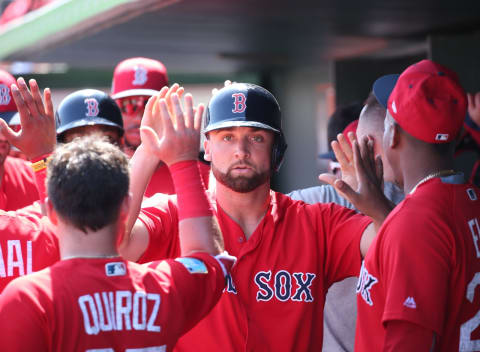
Red Sox prospect #4: Sam Travis – 1B
Sam Travis might have the best Jekyll and Hyde routine going between Spring Training and the regular season in all of baseball. His career spring training OPS is 1.016 over 70 games. That’s a far cry from the .667 he’s managed in 33 major league games or his .787 career minor league rate.
Travis was drafted in the 2nd round of the 2014 draft out of Indiana University where he played alongside Kyle Schwarber. Not only did he play with Schwarber, but he managed to go toe to toe for home runs with him in their final season together. The Cubs outfielder had 13 while Travis hit 11. Of course, he wasn’t expected to hit for power as a pro given his line drive swing. But he was expected to hit.
After 6 HR in 67 PA this spring, there was a reason to believe that he had jumped on board the launch angle bandwagon. The hope was that the long ball display heralded a newly found power tool. His first 21 games in AAA Pawtucket haven’t done much to support that theory, however. With just 1 HR and three 2B, Sam Travis is sitting on a .333 SLG and thoughts of him taking his place as the first baseman of the future have all but evaporated.
The former Hoosier has missed time lately with an intercostal strain but should return to the field soon. Here’s to hoping he can find that power stroke again.
Red Sox prospect #3: Tanner Houck – RHP
Tanner Houck was the Red Sox top pick in the 2017 draft. The standout, right-handed pitcher from the University of Missouri Columbia came into the draft with one of the top fastballs in the class. He showed an ability to work at 92-94 MPH and touch 97 in short-season ball after the draft, but threw out his old four-seam fastball in the offseason to incorporate a new one.
Reportedly, he throws it in the mid-90’s and touches 98 with it. And according to Soxprospects.com, it has a higher spin rate which should help it to miss more bats. It will be thrown in conjunction with his two-seamer, the pitch that got him drafted so early.
He also throws a slider, a changeup, and a curve but all three are works in progress. The quality of his two-seam fastball, however, leaves him with a solid floor since he could transition to the pen if his secondary pitches don’t come around.
The expectation was that he would move quickly through the minors and potentially be ready to replace departing major leaguers following the 2019 season. Or perhaps 2018 if he was shifted to the pen and fast-tracked.
But the reality is…
Thus far there has been no indication that Houck will be able to move quickly. His 6.00 ERA is matched by a 6.40 FIP. A 4.56 xFIP gives some reason for hope that he’s had a bit of poor luck on balls in play. But a 15.3% walk rate negates any optimism you might be able to scrape out of his 2018 stats.
Houck is a work in progress, though we knew he would be. The hope was that he was close to major league ready than any of the other pitchers selected last June, but the reality might be that he’s further away than either Jake Thompson or Zach Schellenger.
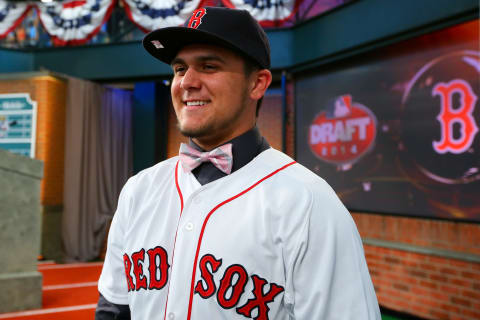
Red Sox prospect #2: Jay Groome – LHP
A former first-round pick, and for a time the consensus number one overall, Jay Groome had extremely high expectations placed upon him when the Red Sox called his name in 2016. His curveball was the best in the draft class. As a big hard-throwing lefty, his ceiling was simply enormous.
There were off the field issues to contend with, which is why he fell to the Red Sox, but the potential was too much to ignore. Unfortunately, his first full season was mired with struggles and injury. And the off the field issues became abundantly clear when his father was arrested on drug and weapons charges.
The 2018 season was to be a fresh start for him, and his ascension to Fenway was ready to begin. But his path to the majors has been derailed once again. The uber-talented Groome will spend the next 18 months recovering from Tommy John surgery meaning his first two full seasons of development have essentially been lost.
While that’s not necessarily a death knell, this is a pivotal time in the development of a young arm. Instead of perhaps approaching a workload of 120-140 IP against advanced competition by the time he reaches the legal drinking age, he will just be starting that process.
He will also likely spend his early seasons post-surgery against age-appropriate hitters instead of being young for his leagues. The timetable for Jay Groome is completely out the window at this point. He could very well get back on the mound, excel, and charge to the majors. But expectations for him have to be considerably tempered compared to this time last year.
Red Sox prospect #1: Michael Chavis – 3B
That brings us to the number one name on this list; Michael Chavis. Another of Boston’s former 1st round picks, Chavis busted back onto the scene in 2017 with 31 HR across two levels after two very disappointing campaigns. That he hit 17 of them in Salem is a remarkable feat, given the home run suppressing qualities of Lewis-Gale Park.
Then the news broke that Chavis had tested positive for PEDs. These weren’t banned supplements or amphetamines. They were hardcore, old school, Cold War-era anabolic steroids. The kind that packs on obscene amounts of lean muscle. The kind that causes liver and kidney failure later in life. Just like that, all of Chavis’ progress was lost and a season of development was flushed down the tubes as he got ready to sit out his suspension.
And that missed season is a bigger deal than you might think, while his season line was an impressive .282/.347/.563, most of that was due to the absurd 1.029 OPS he managed in Salem. Once promoted to AA Portland, Chavis saw his OBP drop to a rather pedestrian .310 over 67 games. Most of that was his BABIP dropping from .360 to .265 which indicates he wasn’t striking the ball quite as soundly.
He still has work to do.
With his strikeout and walk rates remaining fairly consistent, it was probably a quality of contact problem, despite his additional 14 home runs. The power was still there, the contact rate was similar, he just wasn’t hitting the ball as hard as consistently. When he got ahold of one, it still went a long way. Otherwise, he wasn’t hitting it hard enough to see great results on balls in play. This means he had work to do at the plate. Work he can’t do in 2018 because he’s serving his suspension.
Before the news of his failed test, his ETA at Fenway was likely in late 2018 or early 2019. Now? Who knows? Not only does he need to prove he can hit for power without the drugs, but he also needs to learn how to hit advanced minor league pitching more consistently. It’s entirely possible he will still do both when he returns. But we’re back to pre-2017 levels of confidence in Michael Chavis. He has lots of questions to answer, and we have little in the way of reliable, definitive answers.
It’s not all bad for the Red Sox.
While the top 10 have all been disappointing in one way or another, there are rays of hope throughout the system. Esteban Quiroz, who was signed out of the Mexican League over the winter is crushing AA pitching so far.
The 26-year-old has a frame like Dustin Pedroia, but swings a big stick like him too, sporting a 184 wRC+ in 15 games. Jalen Beeks is on easy mode in AAA with a 1.93 ERA. Josh Ockimey continues to thrive in Portland with a 122 wRC+ and 4 HR. And the team just added Josh Taylor from the Diamondbacks as part of the Deven Marrero trade from this winter. Taylor a 2.81 ERA in 14 relief appearances at high-A before the trade and carries a 29.9% strikeout rate with him.
We also haven’t seen last year’s IFA class begin to play and names like Danny Diaz and Antoni Flores could quickly make themselves known to the fanbase at large. Roldani Baldwin continues to flash an intriguing bat for a catcher. Bobby Dalbec flashed his monster power earlier this season and is showing signs of warming up again. Travis Lakins is having a solid year in Portland.
Next: Yankees, among others looking to make trade noise
There may be no future stars on the horizon, but there likely is plenty of help coming. And there may yet be chips in July that can bring in the bullpen arms Dombrowski will surely be hunting for. When one prospect (or ten) falls, two shall rise to take its place.
Hail Rikard!